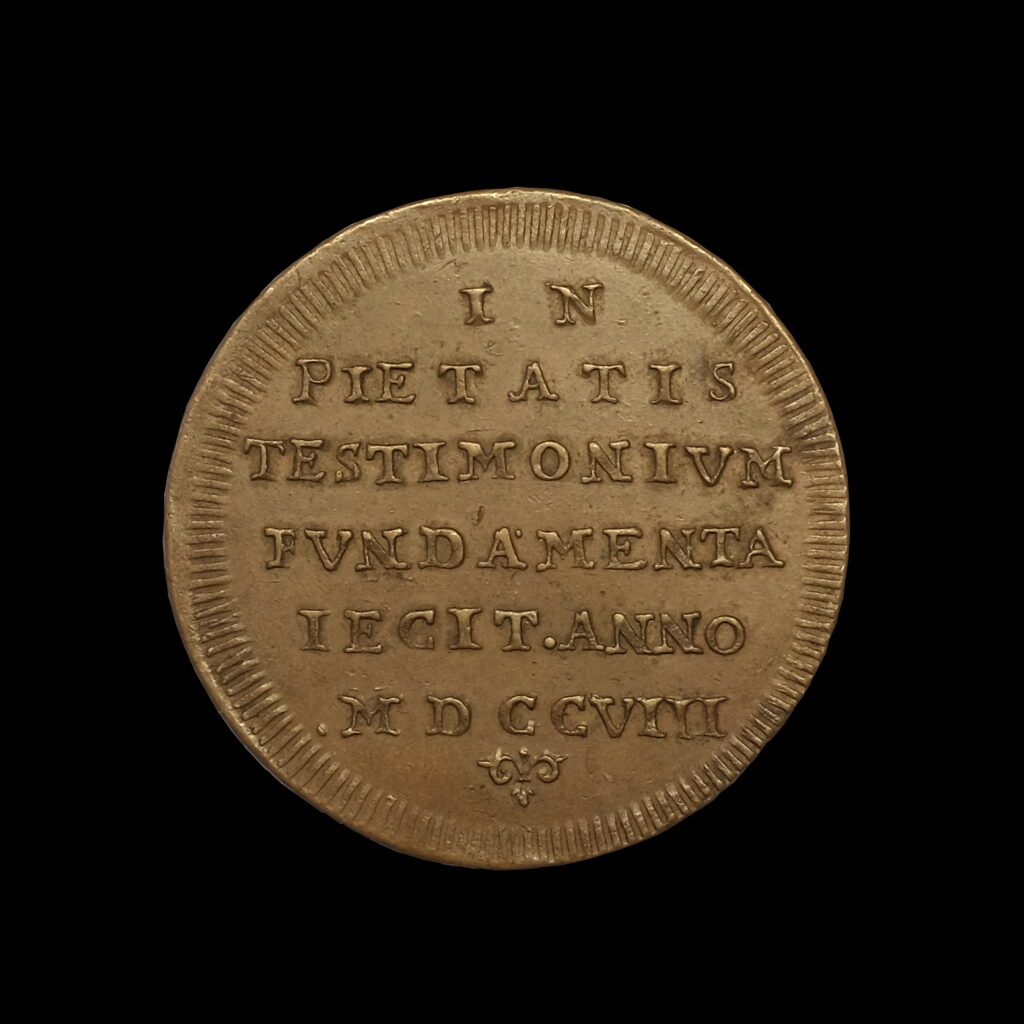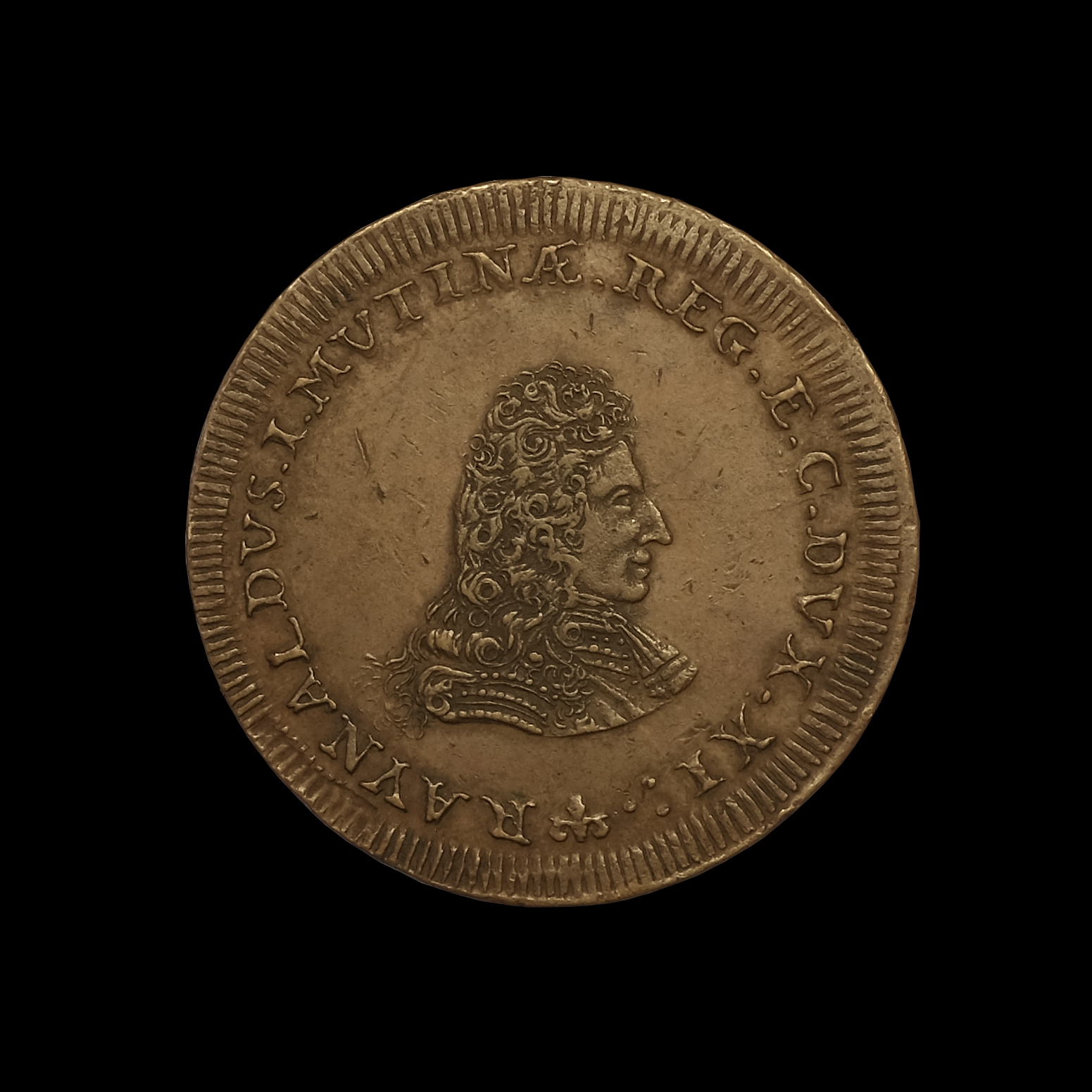The commemorative medal since antiquity was a way to convey the cult of the Sovereign’s personality and to diffuse a message of power and strength. On the one hand it showed the physical portrait of the ruler and indications of his titles, on the other it depicted through images his moral, civic and political qualities that he wished to communicate to the world or celebrated special events such as weddings and special occasions.
On the recto of this medal, the right-facing profile of Rinaldo I is depicted centrally: the representation of the effigy in profile has its roots in ancient Roman numismatics. From the portion of the bust visible, one can see that the Duke wears armour embellished with a gorget of lace, on his head he wears the broad wig typical of the fashion of the time, the countless curls are rendered with particular care. Rinaldo’s face is characterised by precise physiognomic details such as the prominent nose and the attentive gaze that seems almost frowning. The recto of the medal is completed by the inscription ‘RAYNALDVS I MVTINAE REG E C DVX XI’ within an indented border to identify, through his name and titles, the figure represented.
On the reverse is another inscription, indicating the occasion for which the commemorative medal was struck ‘IN/ PIETATIS/ TESTIMONIVM/ FVNDAMENTE/ FECIT ANNO/ MDCCVIII’. The event commemorated here is the placing of the foundation stone of the imposing Church of San Domenico in Modena, which took place in the presence of the duke, Duchess Carlotta, her mother, Benedetta of Brunswick, and hereditary prince Francesco Maria.
Around 1707-08 the old church was demolished to make way for the more important building of the adjacent ducal palace. The church took on greater importance after the Este court moved to Modena. Due to its proximity to the ducal palace, it was considered the court church and the family often attended services held here. The new church was designed to have the façade oriented like that of the ducal palace and the architect of the building was Giuseppe Antonio Torri, one of the best masters of the Bolognese school of ‘scenographic classicism’.








